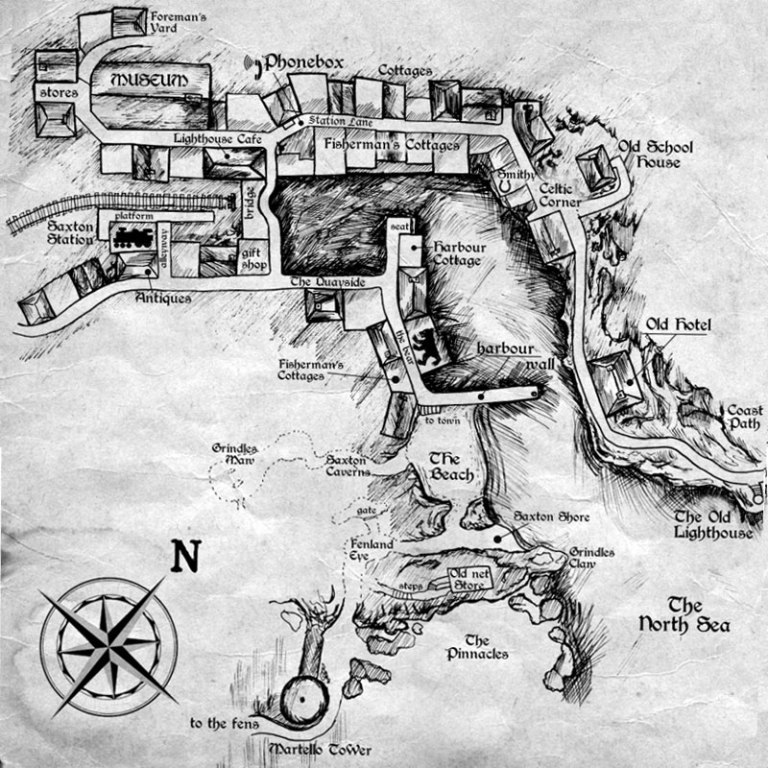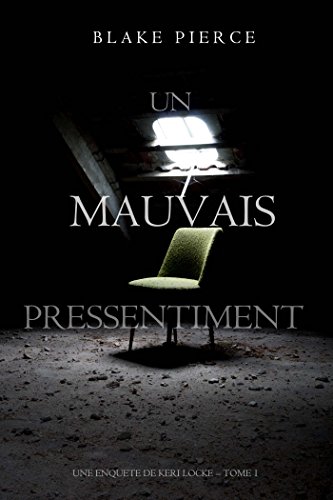I plan to concentrate on my husband’s Italian lines, beginning with their immigration to the United States through Ellis Island, and I look forward to sharing the information I have gathered through the years
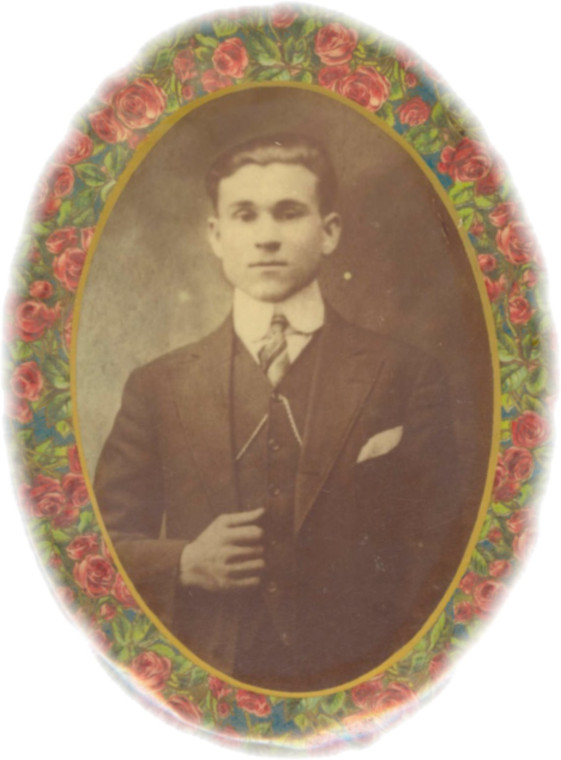
I married into an Italian family… a family with stories of times gone by… stories I never tired of hearing… and wrote down! Many of those stories were also centered around a once, great amusement park known as Savin Rock, of which I will also include stories on.
My Week 1 “Start” weekly prompt begins with my husband’s maternal grandfather, Giuseppe Cambino (Gambino) arriving on American soil in 1913; as the weeks and prompts progress, I will include both sides of his Italian family lines as they crossed the ocean to arrive at Ellis Island… arriving for a better life in America.
The S.S. Moltke arrived in the New York Harbor on May 27th, 1913. The ship had departed from Naples, Italy on May 13th for New York, for a voyage that would take fourteen days to reach its final destination… the United States. There were many immigrants onboard, alongside Guiseppe – eagerly anticipating a new life and “start” in America.
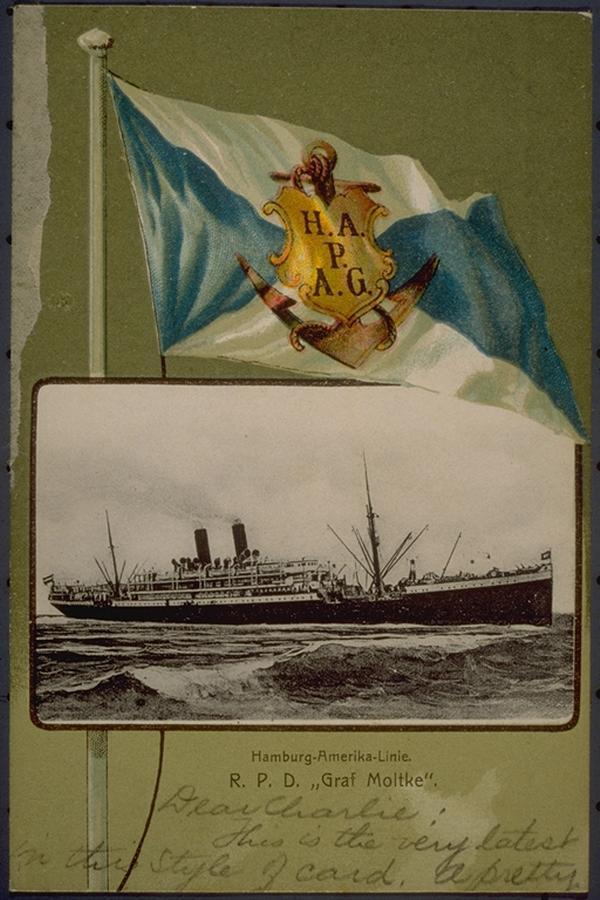
The “Moltke” was built by Blohm & Voss, Hamburg in 1901 for the Hamburg America Line; she had a weight of 12,335 gross tons, length 525.6ft x beam 62.3ft, two funnels, two masts, twin screw and a speed of 16 knots. The Moltke could accommodate 390-1st, 230-2nd and 550-3rd class passengers, and was launched on 08/27/1901. She sailed her maiden voyage from Hamburg to Boulogne, Southampton and New York on 03/02/1902. On 04/03/1906 she commenced her first sailing between Naples, Genoa and New York and her last voyage, Genoa – Naples – New York – Genoa was on 06/23/1914. Guiseppe sailed on one of her last voyages from Italy to New York.
She was later interned at Genoa in 1914 and on 05/25/1915, was seized by Italy and renamed the “Pesaro”, where she began sailing for the Italian company, Lloyd Sabaudo. In 1925, she was finally scrapped in Italy.
Steerage passenger number ‘five’ on the S.S. Moltke was eighteen-year-old Giuseppe Gambino. Arriving at a young age was on his side, as American immigration authorities tended to look more favorably on the young and healthy who could help build America’s booming industrial base. He entered the United States as Giuseppe Gambino, as written on the ship manifest, but through time, his surname evolved into Cambino. Whether he initiated the change or it became by accident, we do not know, but whoever it was changed, it remained Cambino for the rest of his life for him, his marriage and his children. His birth records in Italy clearly show his surname to be “Gambino.”
Ship Manifest of the S. S. Moltke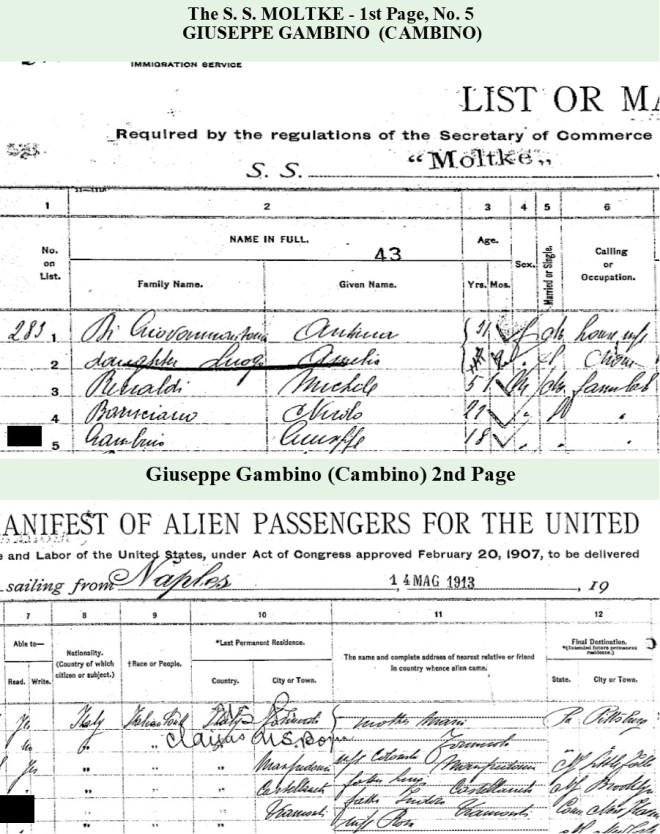
Gambino, Giuseppe Male, 18y, South Italy, Italian, South Tramonti, Italy
His nationality (country of which he was a citizen) was listed as Italy; race or people as Italian South; country of last permanent residence was Italy, town of Tramonti. I’ve often pondered on the lines of this second page, where the names of nearest relatives or friend, where alien came were written. It seems to read as father, Luitalo (sp) and town of Tramonti; his father’s name, from his birth records, was Federico Gambino; he was headed to the destination of New Haven, CT.
Giuseppe verified before boarding that he was not a polygamist, anarchist, or indentured laborer, and had never been in the poorhouse or insane asylum. The ship surgeon and the ship Master both verified that he was in good health for his arrival at Ellis Island. There were strict rules in place at that time, and the ships were held accountable for the health of their passengers. It was in the ships best interest to verify their occupants before sailing, as they would be responsible for the payment to return those that Ellis Island would not accept. Ellis Island verified everyone entering our country, checking for disease, as well as mental and body. Immigrants were turned away if they were seen as diseased and unfit… America was looking for able-bodied immigrants to build the melting pot of America.
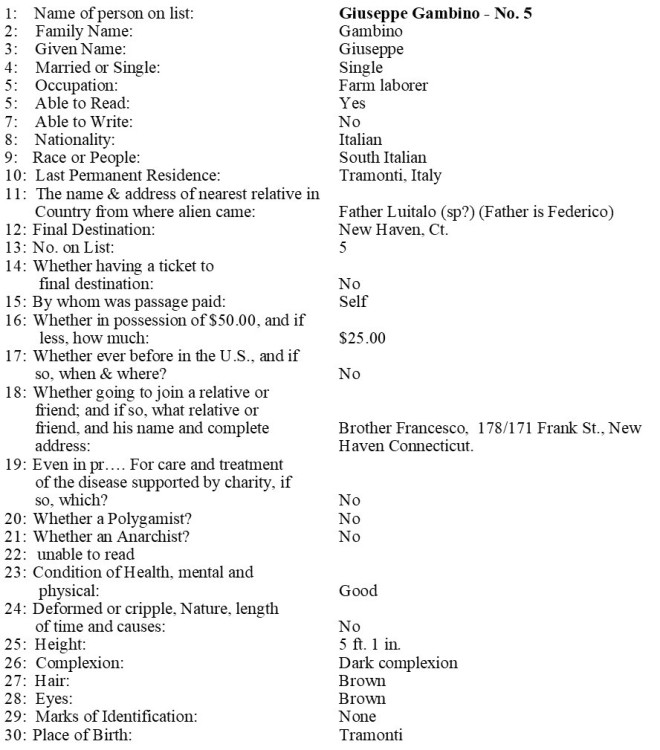
Of the twenty-three names or so on the ship manifest, Giuseppe was one of twenty-one that was listed as able to read and write. The hopes that these immigrants pinned on the new world were all ahead of them. Living in America gave much more opportunity for themselves and their families. Giuseppe stated that he paid his own passage of forty dollars, and all that was left in his pocket was twenty-five dollars to begin a new life. Guiseppe never wanted to return to Italy, he told his son Johnny many tales of life there and he wanted his children to have a better life. He did not speak Italian in the home, he encouraged them to only learn and speak English. He wanted them to be American!
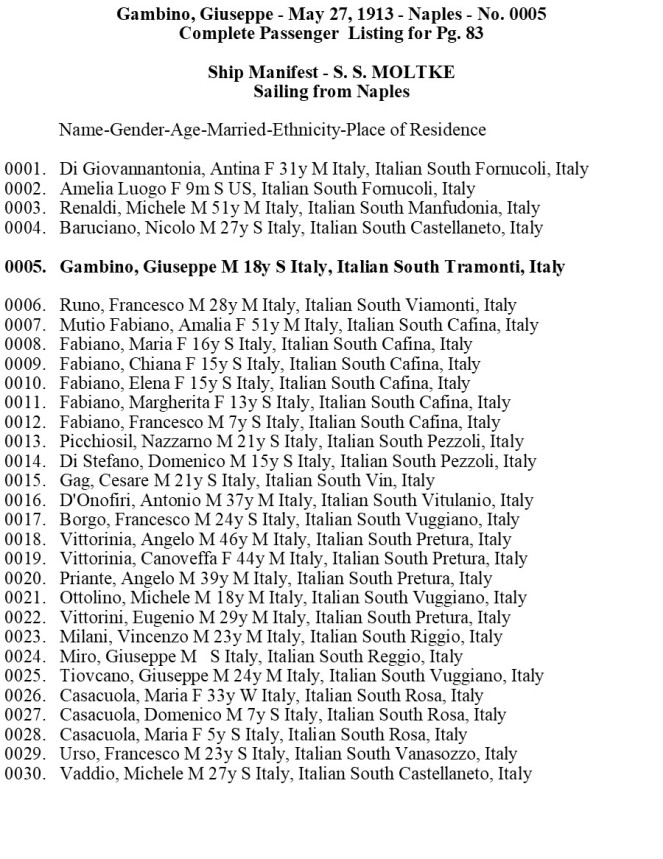
The voyage over in steerage was horribly crowded for Giuseppe, as he was crowded in with hundreds of immigrants, unknown to him… all squeezed into tight spaces. Some steamships could accommodate as many as two thousand passengers in steerage, so-called because it was located on the lower decks where the steering mechanism of the sailing ships had once been housed. These long narrow compartments were divided into separate dormitories for single men, women, and families. Inside the steerage cabin were bunks, two or three tiers high, equipped with meager mattresses – often populated with lice. If you were a woman traveling alone, or with your children, sleeping in the same room as a strange man was too immoral to even consider; they often chose to sleep sitting up on the deck. As far as the family stories have been told, Giuseppe came to the United States alone. I can not imagine going to a foreign country, with little money and no knowledge of the language there, but he was coming to meet his brother.
The water calmed as the S. S. Moltke made its way into the New York Harbor. Most immigrants, eager to catch sight of the new land, hurried up on deck… I’m sure Giuseppe stood with them in wanting a first glimpse of where he now would call home. In Italy, they had heard of the Statue of Liberty but were never exactly sure what it was. Still, to all of them, the first sight must have been unforgettable. The Statue Of Liberty offered them a mute, but powerful ‘welcome’ as it stood silently in the Hudson Harbor.
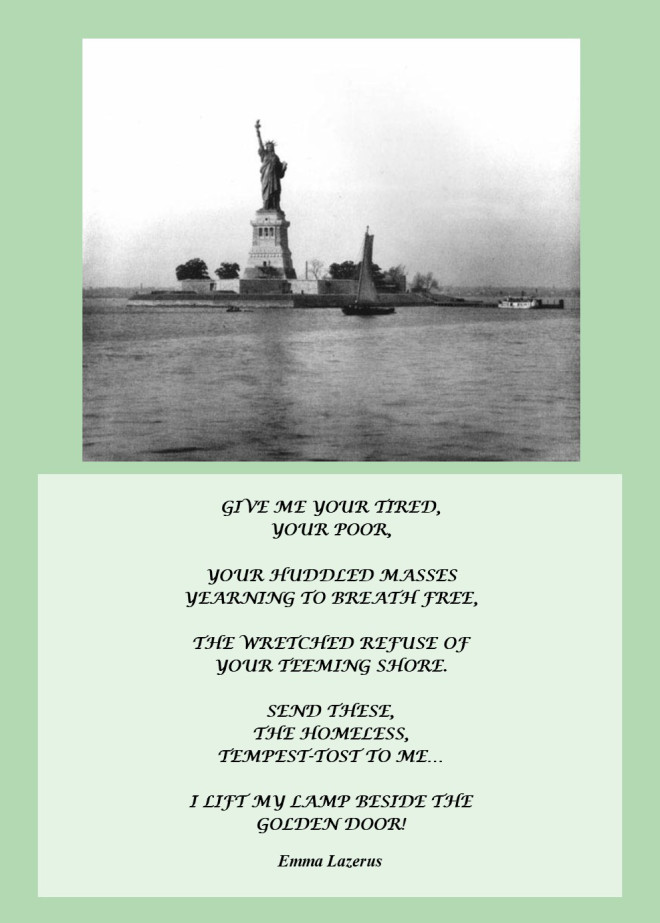
The Moltke steamed up the Hudson River to a pier where the first-and second-class passengers, native or immigrant, debarked. They hoped their passage through immigration would be quick and courteous, and while they were being cleared, the steerage passengers were kept waiting – and waiting. In an effort to impress the inspectors, immigrants changed into their fanciest traditional costumes before leaving the ship – often it was the only other suit of clothes packed for the journey.
When it came time for Giuseppe to finally debark with the others, they were all harshly commanded to hurry. Bulky in their many layers of clothing, carrying bedding, trunks, holding their only possessions, even cuttings from the family vineyard to transplant in America, they scrambled from the S. S. Moltke; good riddance and glad to leave! They then boarded a barge that transported them over to Ellis Island. Giuseppe always had a vineyard after he married… first at the farm and later when he moved his family to an 1860 built saltbox style home, situated directly on Long Island Sound in West Haven, CT. Most Italians kept their traditions from home, wanting to have just a little feeling of “home.” (another post on this 1860 home)
Finally landing, Giuseppe joined his shipmates to line up at the main door – standing like cattle under an enormous metal canopy that was about fifty feet wide. He then entered the main building and climbed the immense stairway to the huge Registry Room. In 1913 the room was still divided into iron-railed aisles into which the new arrivals were steered (or shoved) to wait… once again.
Five thousand immigrants were processed a day as the Ellis Island staff worked twelve hours a day. By 1906, at immigrations peak, two or three times that number might arrive in a single day.
After passing the medical examination, Giuseppe moved through the back of the room to meet the ‘primary’ inspector; the man who would finally give or withhold permission for him to go ashore. The inspector asked Giuseppe a total of twenty-nine questions. What was his name, his age, could he read and write? What was his occupation and destination? All his answers had to exactly match the information previously recorded on the manifest of the S. S. Moltke. Just because you wanted to come and live in the United States… was not the reason you were granted acceptance.
The most difficult question men often stumbled over was – do you have work waiting for you in the United States? The correct answer was ‘No.’ The importation of contract labor was illegal and during the time that Giuseppe came,,, many laborers were deported from Ellis Island.
After leaving the primary inspector, Giuseppe returned back to the baggage room to gather his belongings and with papers stamped from the primary inspector’s desk, he was now free to enter the United States. He ferried over to the Battery and headed to Grand Central Station to begin his final journey to his listed destination of New Haven, Connecticut. What were his thoughts as he sat on that train, hoping he had been put on the correct train… hoping his brother Francesco would be waiting for him… wondering what would he do if he was not able to find his brother! I imagine there were other Italians on that train of whom he spoke in his language to… as he rode for almost two hours before reaching Union Station in New Haven.
Only a third of the immigrants remained in New York City, which kept the railroad office at Ellis Island very busy – sometimes selling as many as twenty-five tickets a minute. Immigrants leaving the island often wore this sign, “To the Conductor: Please show bearer where to change car, or train, and where to get off, as this person does not speak English.” These immigrants were very brave… coming to a foreign land, not knowing the language, hardly having any money left in their pockets and often having no family here at all.
Giuseppe Gambino / Cambino was the first of our direct line of Gambino’s to come to America. He came as a young man at the age of eighteen, now beginning his adult life in a new land. From the ship manifest, it showed he was met by his brother, Francis/Francesco (sp from records) – destination listed as New Haven, Connecticut. We can only assume he chose New Haven because of his brother, Frank, then living there, or Frank took him there to live with friends. Giuseppe did indeed go to New Haven and by 1920 he was still living at 178 Frank St., of where it was written as his destination.
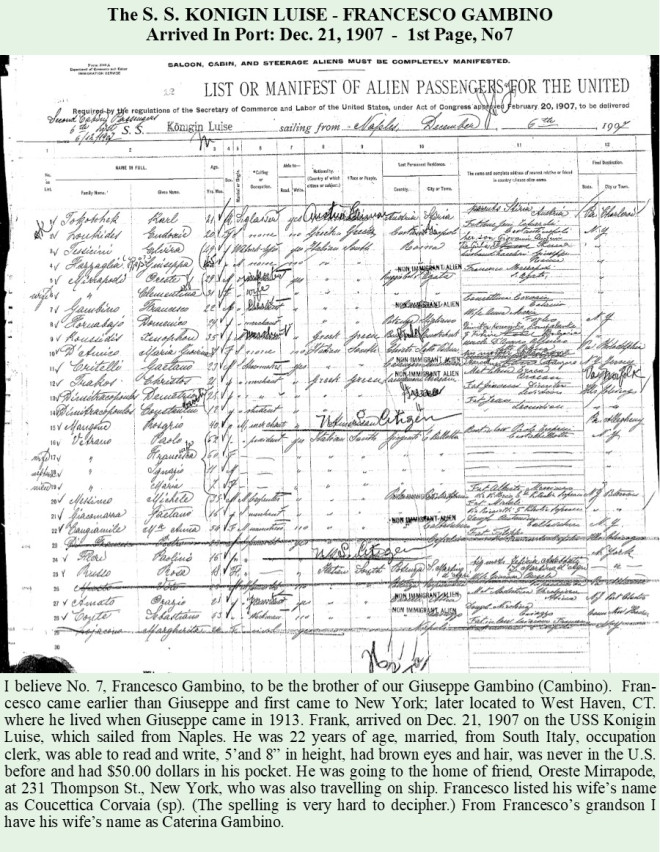
It was told to me by Giuseppe’s son, Johnny, that he lived in the apartment of friends when he first came to New Haven; his father told him that when he was young. That is probably why I never found his name in 1914 listed as an occupant in the city directory for 178 Frank St.; most likely he rented a room in someone else’s apartment. I did find him listed in 1920, he was then the sole occupant; he was also now listed as a barber at 668 Washington Ave., West Haven; Giuseppe had now begun a business as a barber.
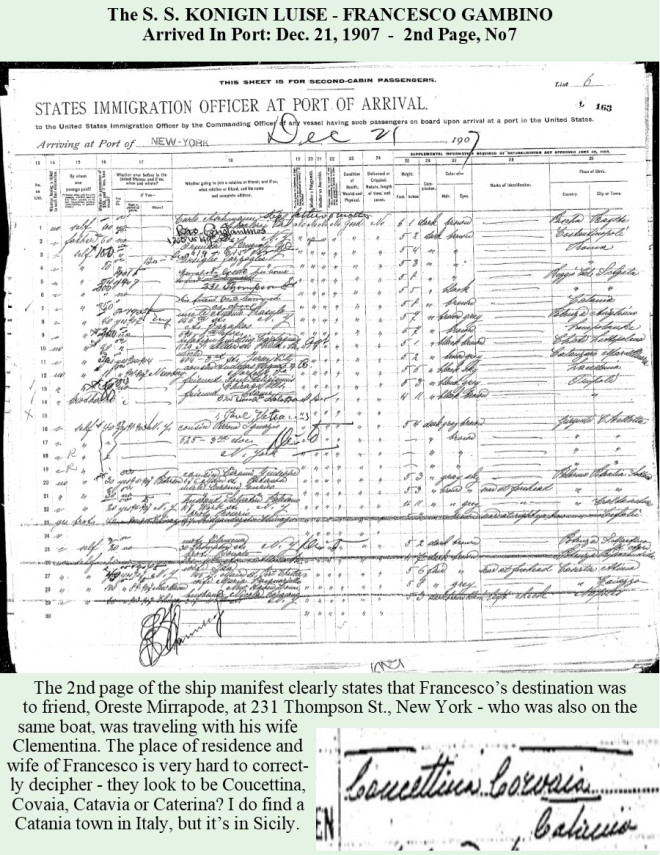
In searching the Ellis Island website for Giuseppe’s brother, I only came up with one entry for a Francesco (Frank) Gambino. It showed that he left from the port of Naples, and arrived on December 21, 1907, married, age twenty-two, sailed on the ship “Konigin Luise,” and was no. 7 on the ship manifest page. Most of the Gambino’s who immigrated to America sailed from Sicily and since he came from the same area as his brother – I might assume that this listing may be him. The age is not correct, as the original family birth listings from Italy, lists his birth date as 1881, which would make him twenty-six years of age; his age could be listed wrong on the ship manifest.
This new “start” for Giuseppe in America brought many changes to his life that he might not have had in Italy. He entered the U. S. as a laborer, but eventually acquired the trade of barbiere (barber) which led him to become a business owner of his own shop – Buddy’s Barber Shop at 668 Washington St. in West Haven, CT. He wanted to be an American, he wanted to start a new life, marry and raise a family in America. Giuseppe was part of the “melting pot” who would be contributing to help America flourish.
I will return to Giuseppe later during the year with more…If you are family and reading, please feel free to share your thoughts in the comments below. You might even possibly be a new cousin, and if so, I look forward to connecting with you. I began the gathering of these stories and information many years ago and decided that the time was right this year to “start” sharing my husband’s family history! Goda! (Enjoy!)

© 2018, copyright Jeanne Bryan Insalaco; all rights reserved


